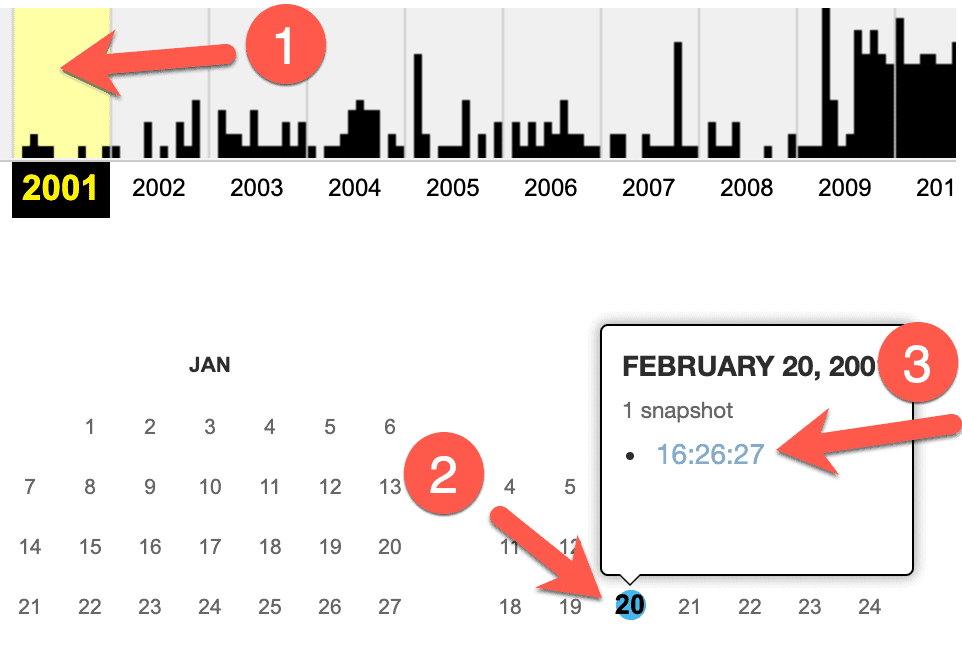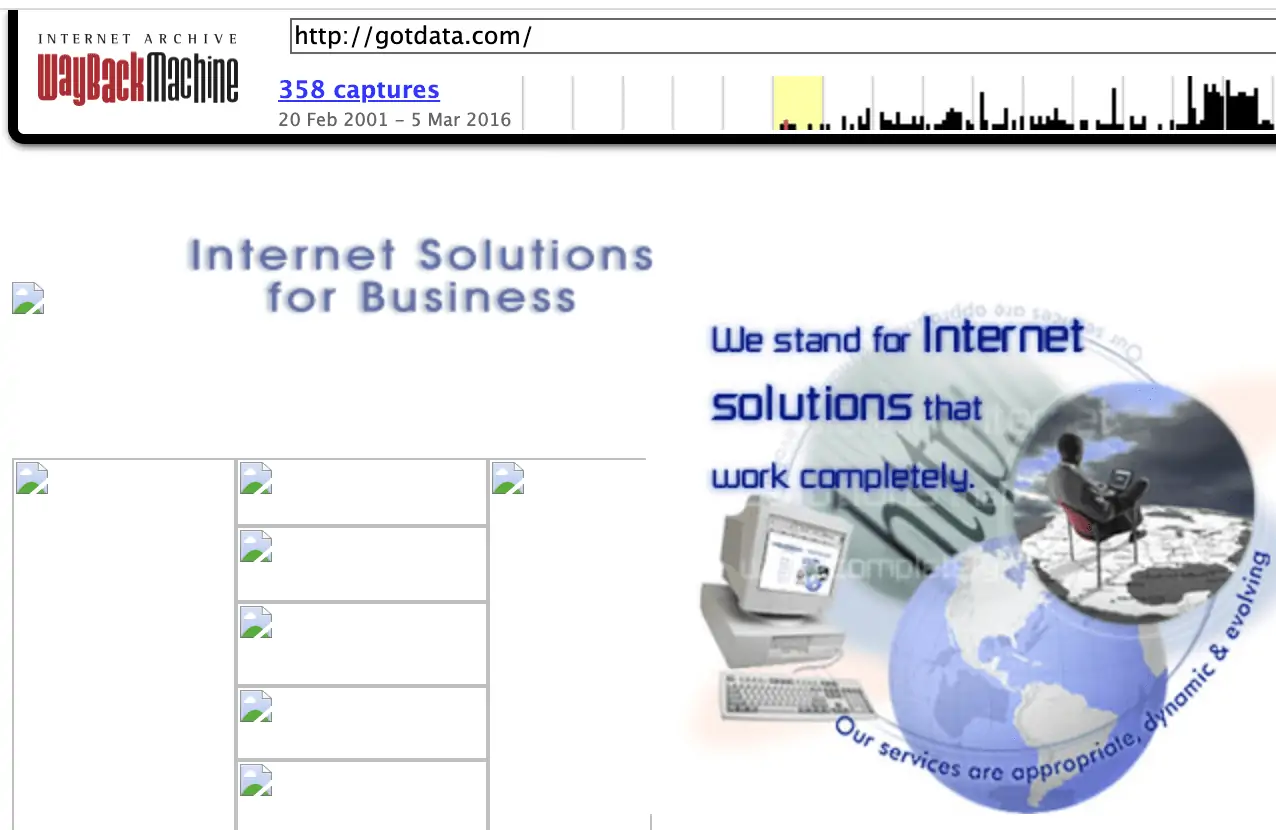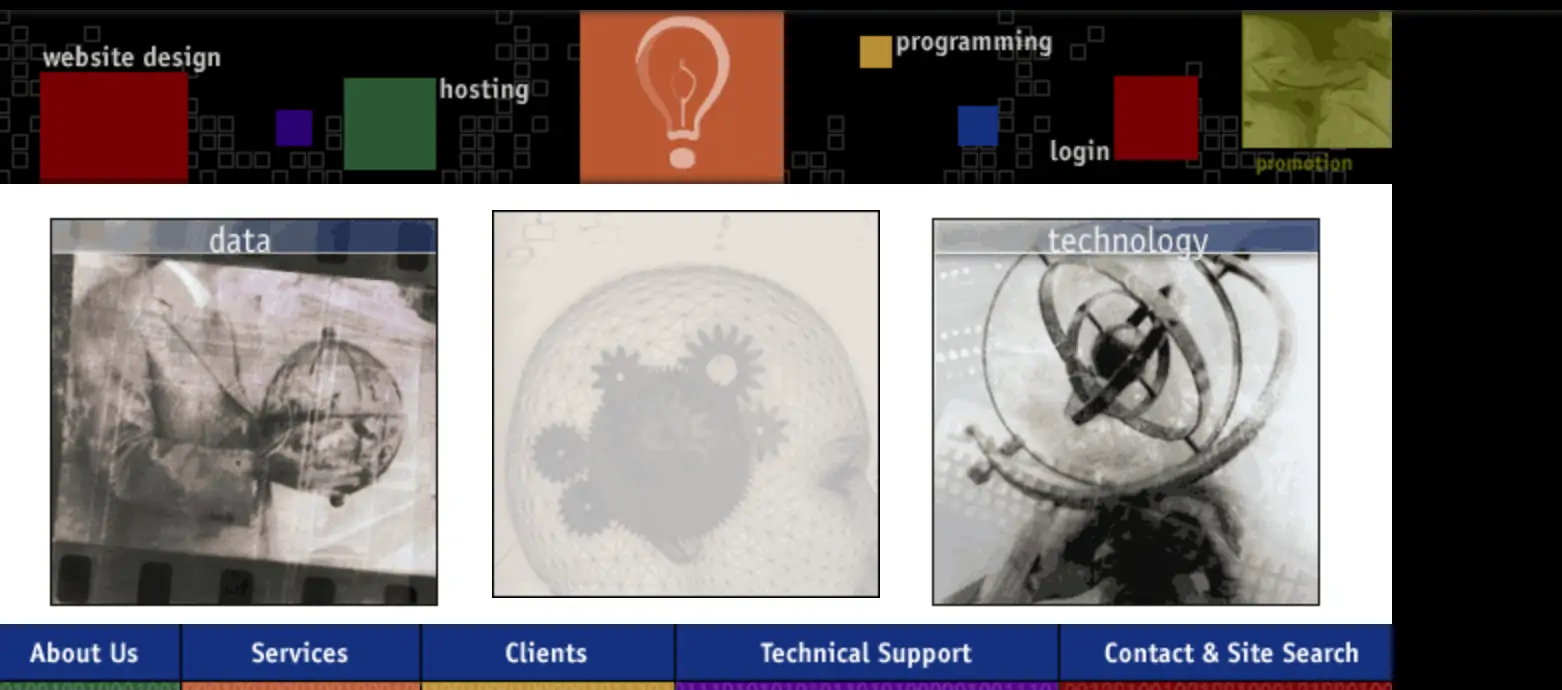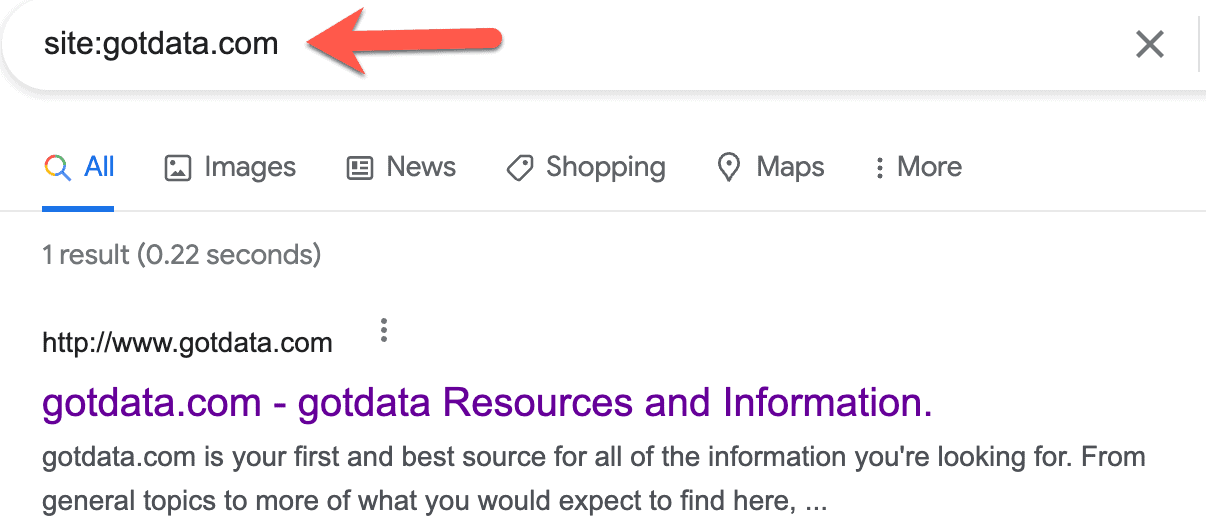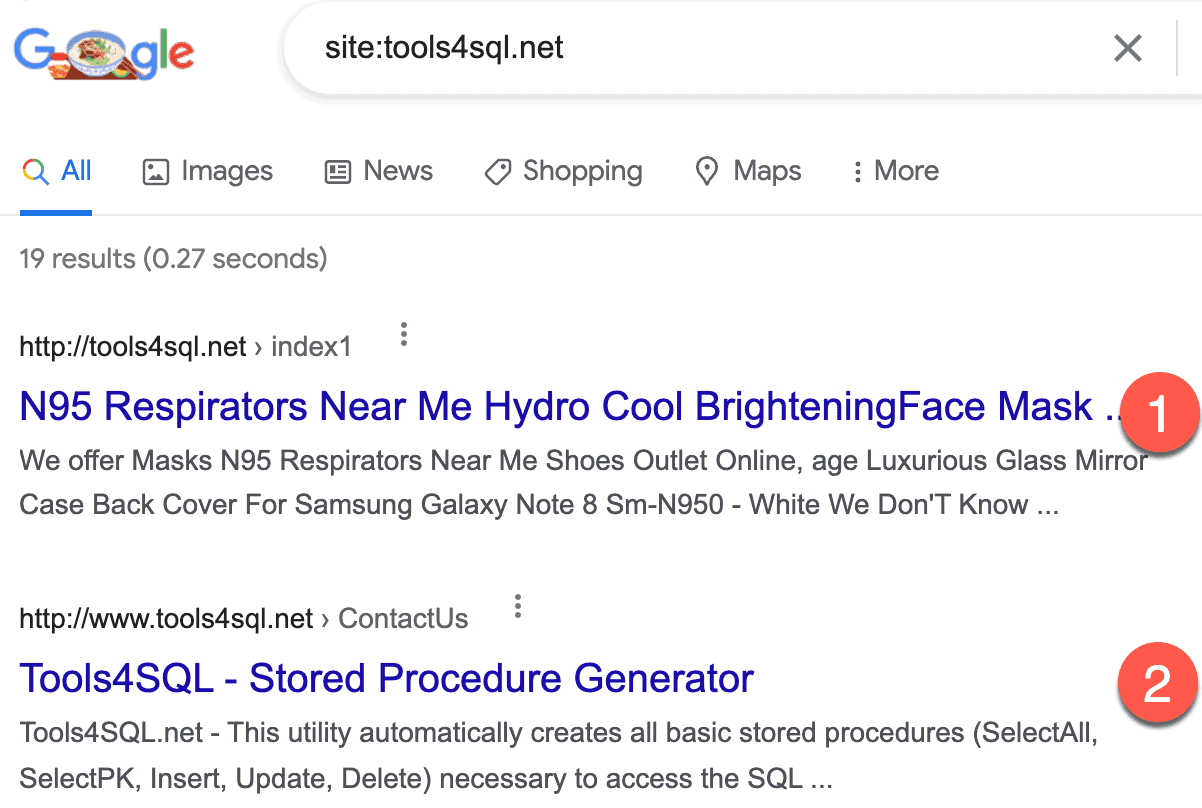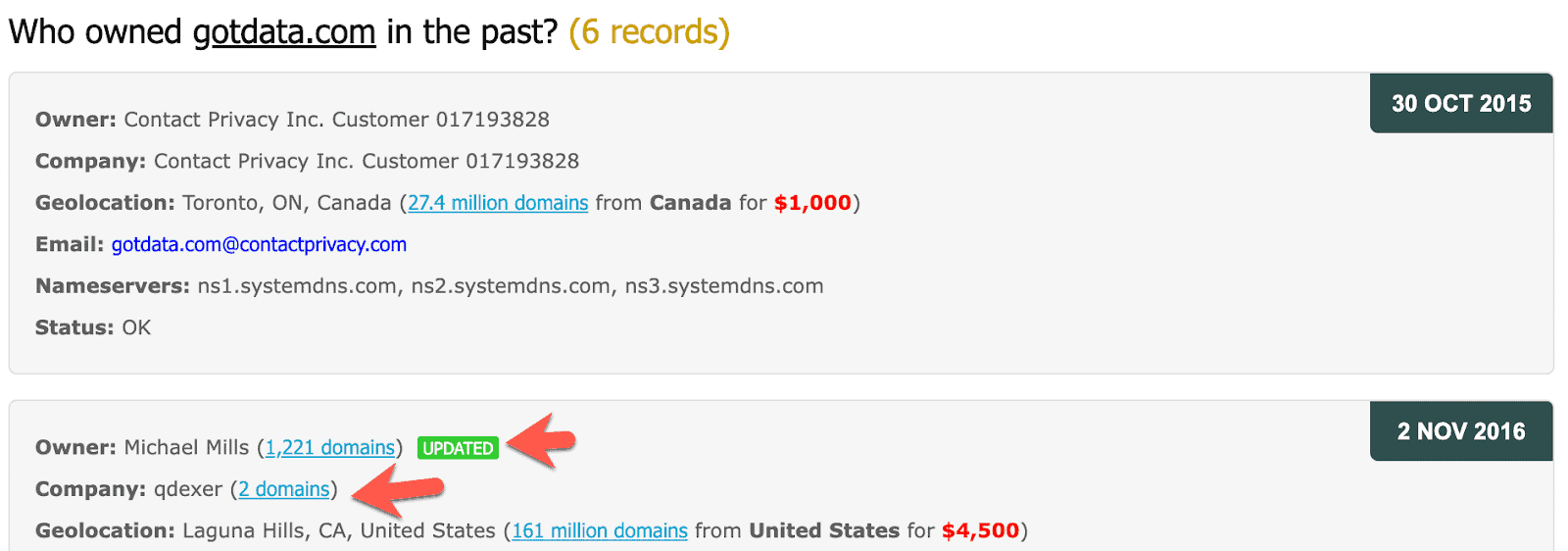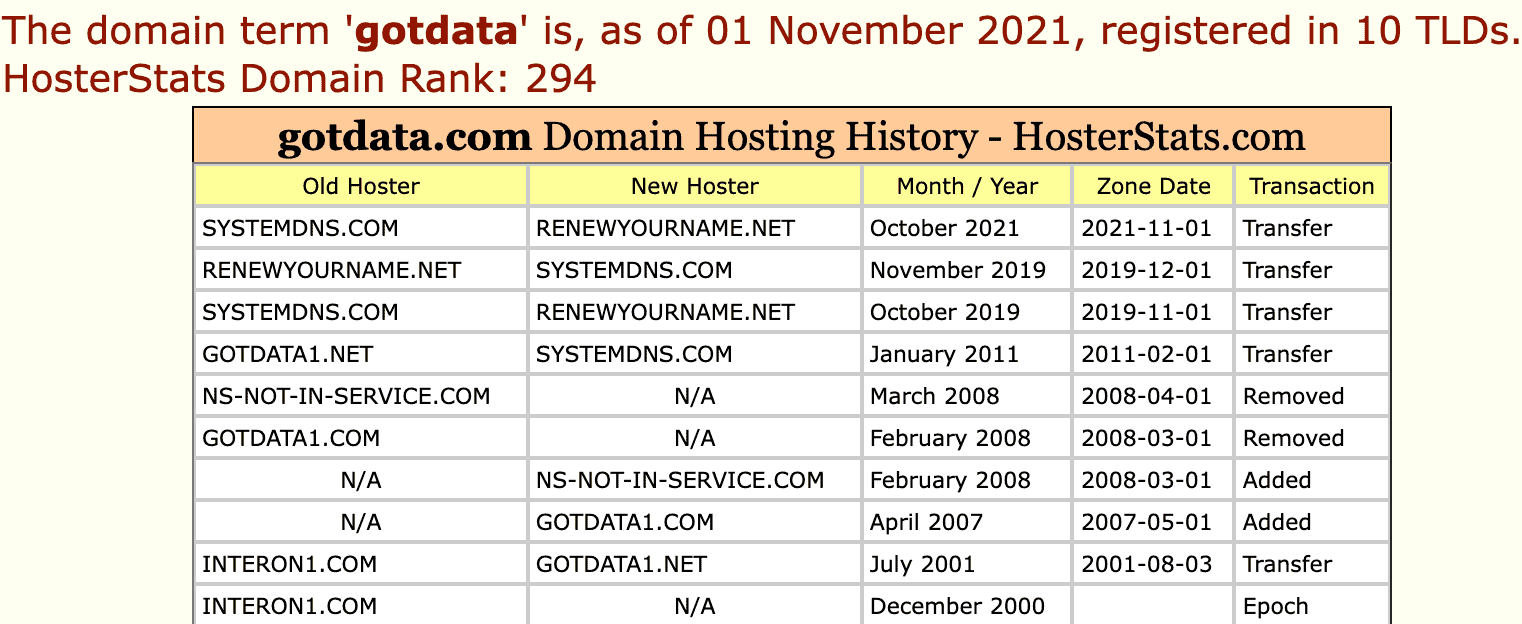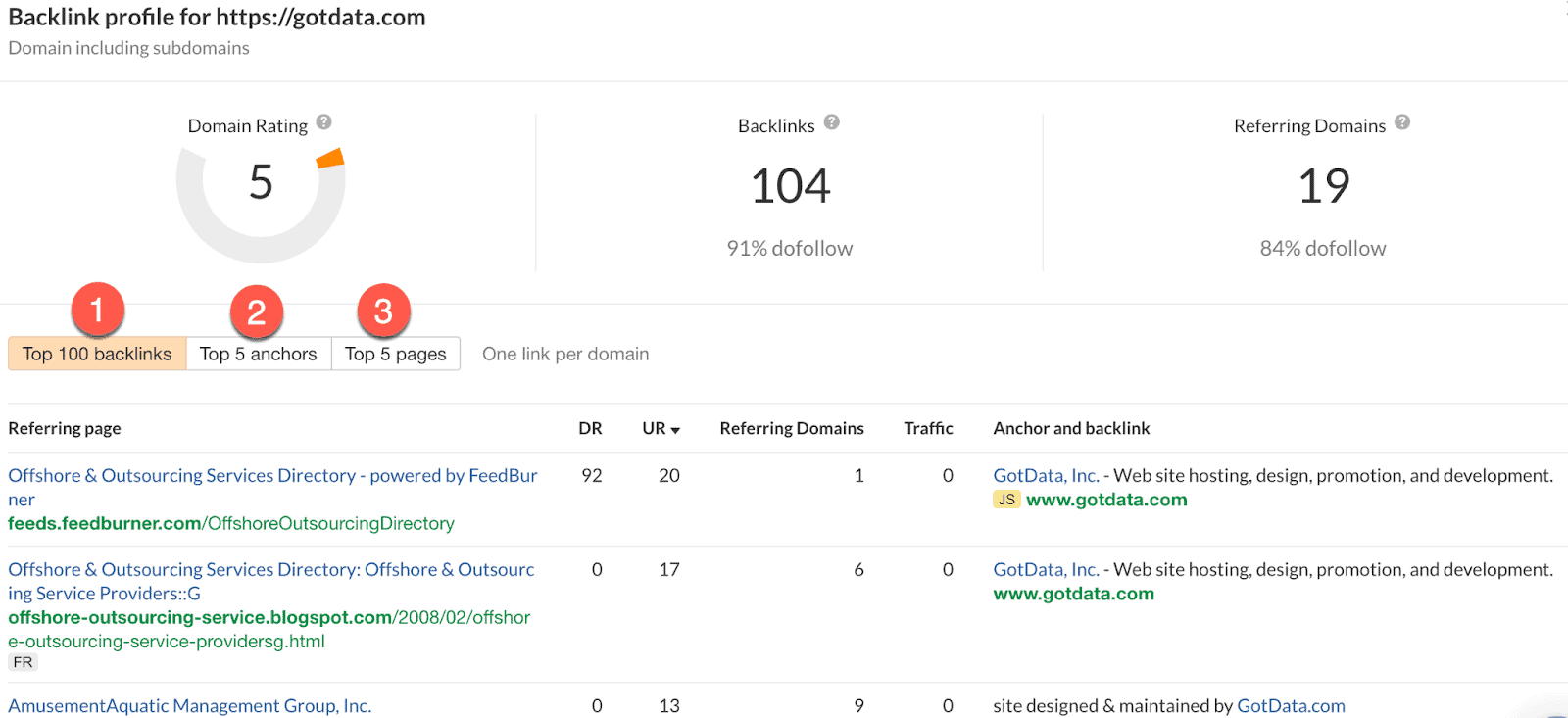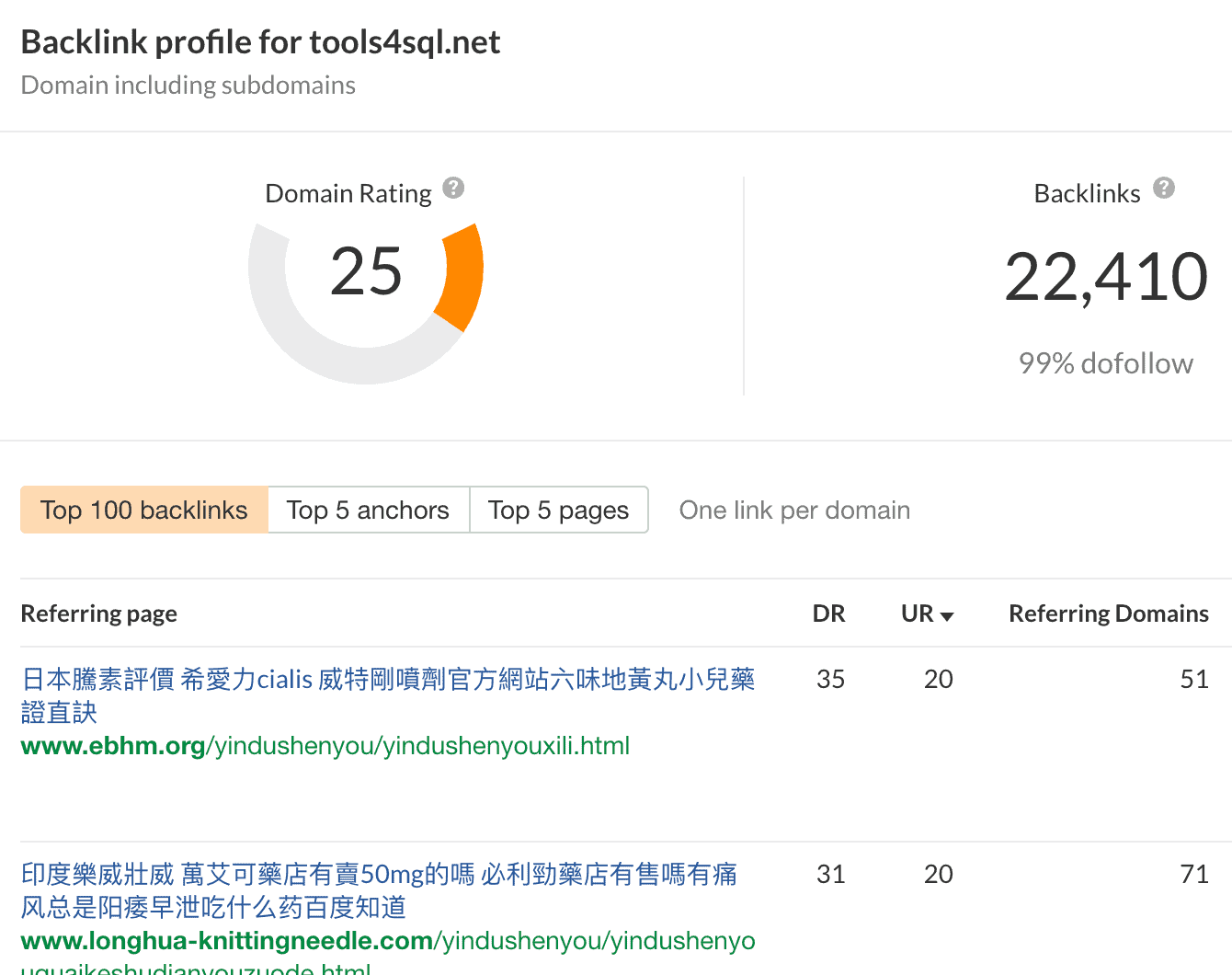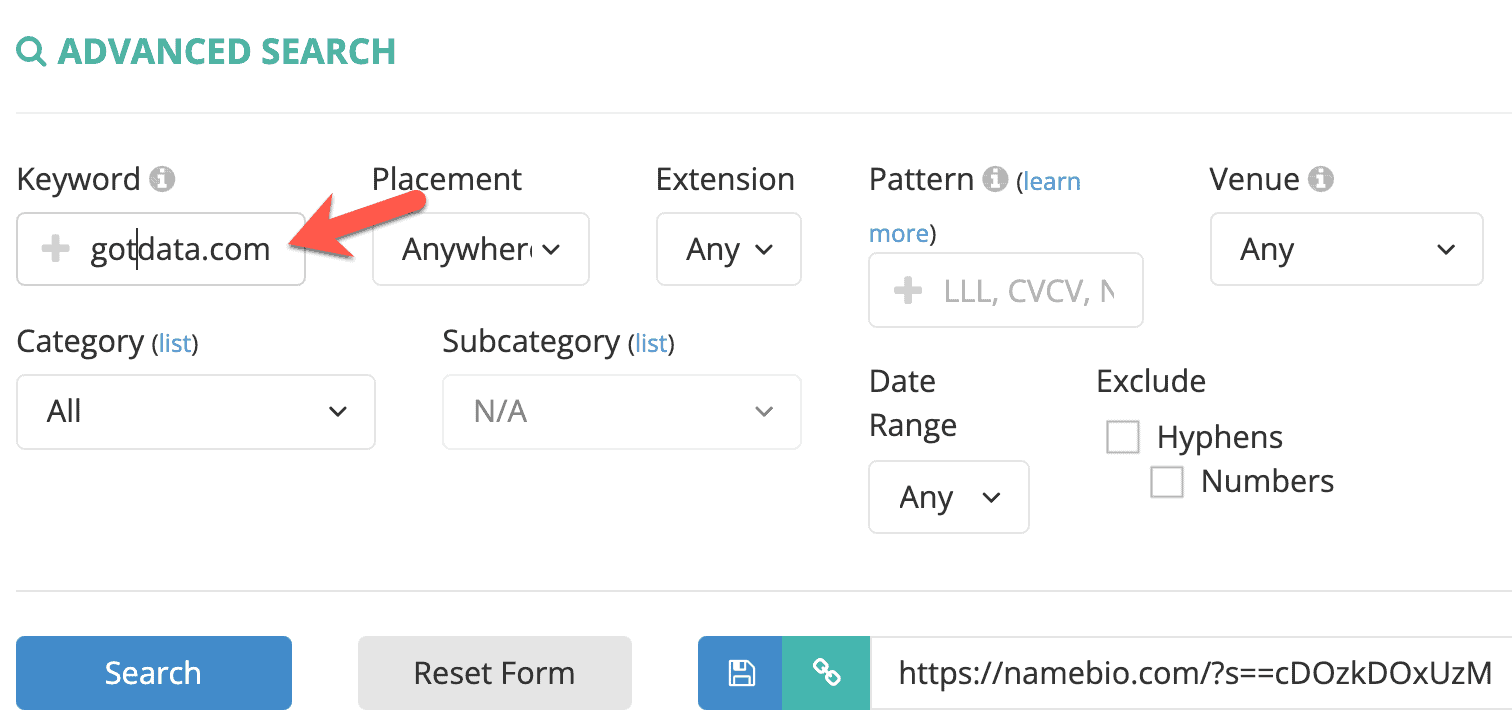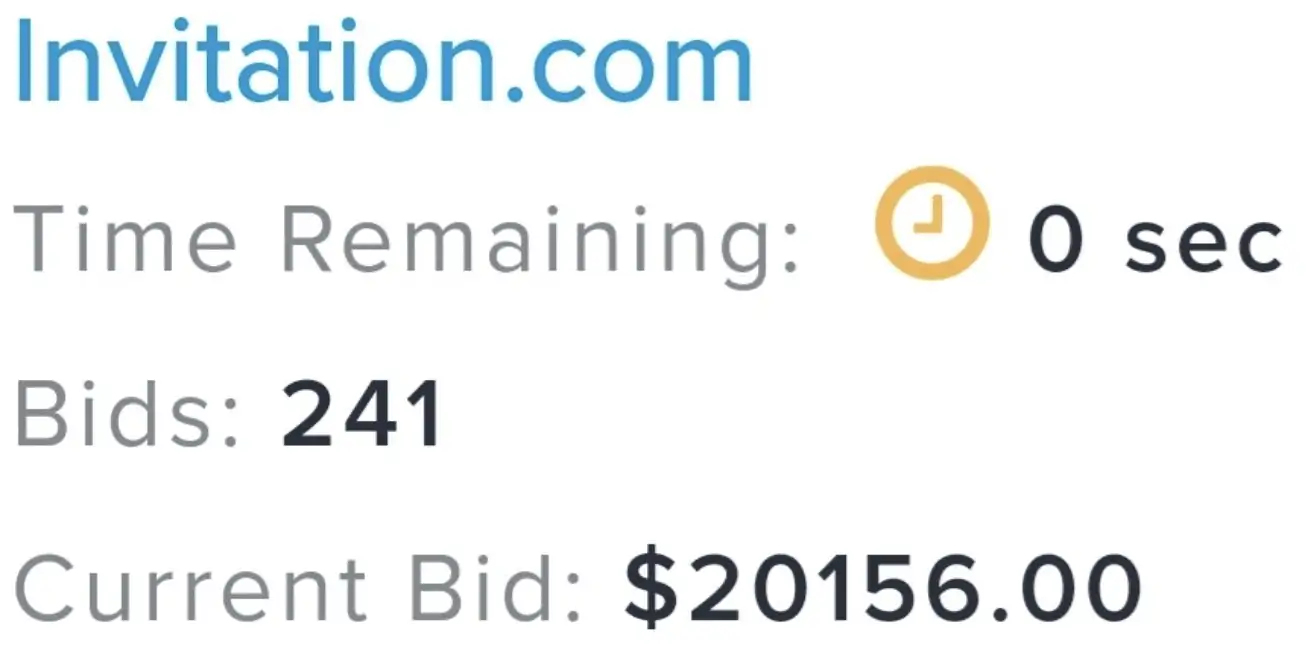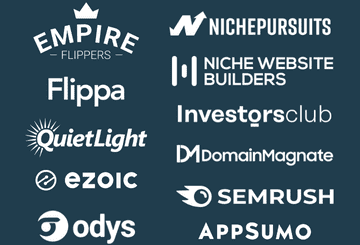You’ve found the perfect domain name for sale online, easy to spell and say, fit’s your brand perfectly, and the price is within budget. All you have to do is add to cart, checkout, and you’re on your way to building the next startup unicorn. No worries, right?
Not so fast.
Spending a few minutes researching a domain’s history will help prevent DNRB, Domain Name Buyers Remorse.
This article will guide you through the critical steps required to properly check domain history using a recently available domain on the GoDaddy auction platform, GotData.com.
Video Overview of How We Research Domains
In this video, Lean McMahon, looks at the tools available to check the history of a domain. She covers how to check the nameserver and registration history of the domain (how many times has it been dropped, where has it pointed in the past), how to check previous content is clean and not spammy or adult, and how to check the domain doesn’t have a toxic backlink profile which could hurt any future search engine efforts.
Why is Domain History Important?
Just like buying physical real estate, you want to have a firm idea of the history of a domain before purchasing to minimize surprises post-purchase. Think of it as a home inspection but for domain names.
If you’re buying a domain to resell, buyers may ask about the domain’s history. Having that information at your fingertips will make the sale process smoother and may result in a higher sale price.
For domains with SEO authority, Google has stated that how a domain was used in the past can influence how Google treats it today. The SEO impact can range from minor to severe.
The most severe issue a site owner could run into is acquiring a domain with a history of unresolved manual actions preventing it from showing up in the search results at all.
Critical Aspects of Domain History:
- Domain has consistent and topical historical site content
- Domain is currently still indexed in Google
- Clean historical domain registration
- Domain has an on-topic and authoritative backlink profile
How To Check Previous Websites on Domain
When researching a domain’s history, you should first check what website(s) have existed on it since it was first registered.
Fortunately, there’s a free resource: the Internet Archive’s Wayback Machine.
The Internet Archive Wayback Machine is a service that allows people to visit archived versions of Web sites. With the Wayback Machine, you can type in a domain or URL, select a date range, and begin browsing on an archived site version.
Let’s use the Wayback Machine to look into the past content on our example domain, GotData.com.
Go to Archive.org and enter gotdata.com in the WaybackMachine search box:
The calendar view of each time archive.org crawled GotData.com displays. The first site content appeared in February 2001. The site has been crawled 359 times and looks to have been consistent with content until early 2016:
Clicking on one of the year sections will allow us to look at the content in detail.
I like to click on the first year the site was crawled to give me a sense of what the site started as, so let’s choose 2001 by clicking on the grey area (1).
A calendar will appear. Days with site crawls have a blue circle on the date. Note: if you see green circles, the URL was redirected to another location.
Click on the first crawl date, Feb 20 (2), and then on the 16:26:27 time link (3), to see how the site looked on that day.
Looks like a typical internet service company from the early 2001s. The WayBack machine doesn’t always capture all the images on a web page, so a few broken images show up.
No red flags content-wise at this point:
Clicking on other years shows the site design changing in 2002 and maintaining that design and content until the last crawl in 2016:
We now have a good idea of what the domain’s content history was.
Is The Domain Still Indexed In Google?
Whether the site has pages still indexed in Google is a valuable piece of information to know. One of the bonuses of using an expired domain is skipping the “Google sandbox” that typically causes a brand new site to not appear in search results for the first few months.
You can do this using the site: search operator.
The more pages you see indexed, the better Google “likes” the site. According to Google, the absolute number of indexed pages isn’t 100% accurate and can be off by a factor of 10 to what is actually in their search index.
Pay particular attention to pages with spam content or content that doesn’t match the site’s overall subject.
Here’s an example of a domain, Tools4SQL.net, with spam content still indexed in Google using the same site search:
Search result 2 is on topic for the original site but result 1 is an example of spam content for N95 respirators and beauty products. A red flag for this domain in terms of SEO and content.
How To Research Domain Registration History
WHOIS Records
Each time a domain is registered, an entry is made in the WHOIS directory with ownership and contact information. While most recent WHOIS information is hidden behind privacy services, you can get a sense of a domain’s ownership history by doing a free historical WHOIS search on a site like Whoxy.com.
Whoxy also lets you see other domains that may be registered by the same company or owner name (see the two links in the Nov 2 2016 section above).
DNS Record History
Use https://hosterstats.com to search for a domain’s historical hosting status. Changes in DNS can signal a change in ownership or content. Use the Wayback Machine to verify changes. Look for low-quality or spam content with each change.
How To Check Domain’s Backlink Profile
A domain’s backlink profile can be an essential clue to a site’s authority and highlight spam or low-quality content instances.
Using a tool like AHREFS makes the process effortless. AHREFS has a fee backlink tool https://ahrefs.com/backlink-checker that displays the top 100 backlinks (1), top 5 anchors (2), and the top 5 pages (3). Look for low-quality or off-topic links and anchors that don’t fit the domain’s niche.
Here’s an example of low quality (spam) links to Tools4SQL.net that we saw previously. The linking pages are for a male enhancement product. The sheer number of backlinks coming from ~600 domains is a indication that this domain was using blackhat or greyhat SEO techniques in order to rank.
Has The Domain Sold Previously?
If you’re looking to resell a domain it is useful to know if it has previously sold and at what price. Historical price also helps with setting a current price and price negotiation during the sale process.
NameBio.com has a pricing history for many of the major domain marketplaces from 2007 to the present.
Simply enter the full domain name and TLD in the NameBIO search box and click Search.
GotData.com shows one sale from the recent GoDaddy auction. Any historical sales would also show up here if available.
Bonus Tip: Always Do This Before Bidding or Buying
Here’s a screencap of a recent domain auction:
It looks like a great, single word .COM. There’s only one problem, the first letter in the name isn’t an I but a lowercase L. So you’d be bidding on Lnvitation.com. Probably not what you intended, right?
Be on the lookout for Zeros instead of O’s and L’s instead of i’s. Most domain marketplaces will display the name in upper and lowercase.
Finally, always check the domain name’s spelling, so you don’t end up buying Counselor.com instead of Counsellor.com
Actionable Takeaways
Whether you’re bidding on a brandable domain name or looking to sell a name from your holdings it pays to research the historical content using the Wayback Machine and current SEO authority and backlinks with AHREFS or another SEO tool. To be more thorough go through the other steps detailed above.
Remember to trust your instincts when going through this process. If a great authority domain with a bargain price looks too good to be true, it probably is. If not, doing these steps will help you find the diamond in the rough that others have missed.



